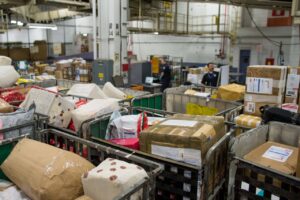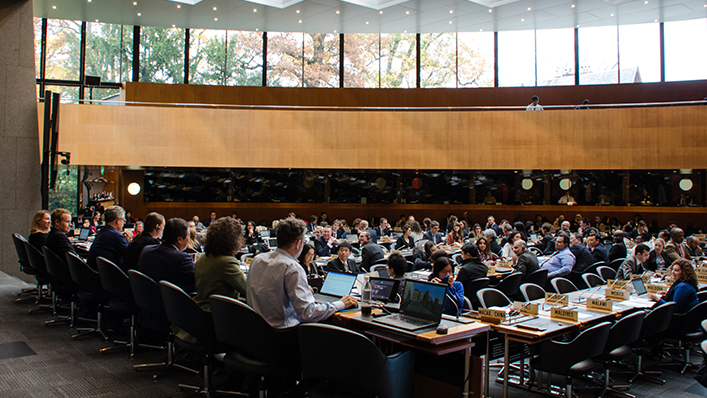Blog
U.S. & International Customs Practices Under Review as Ecommerce Surges

Next year, more than 100 billion small packages are expected to be shipped worldwide, an increase of more than 35 percent over 2016 levels. That information, provided by the Pitney Bowes Parcel Shipping Index, is based on analysis of the world’s 13 largest geographic regions, which found China leads the world with more than 30 billion parcels shipped during 2016, followed by the United States at 13 billion, and Japan at 9 billion.
The single biggest reason for this surge, of course, is eCommerce. Consumers worldwide have embraced the convenience and choices inherent to online shopping and, collectively, have added billions of new packages to the global supply chain.
It seems though that the global supply chain might have been caught off guard.
And nowhere is this more evident than among international customs agencies and the agents charged with evaluating and inspecting every package that arrives at their borders.

In 2018 testimony before a U.S. Senate subcommittee, U.S. Customs and Border Protection (CBP) Commissioner Kevin McAleenan said the growth in eCommerce traffic is putting a strain on the agency’s ports of entry. “eCommerce shipments pose the same health, safety, and economic security risks as containerized shipments, but the volume is growing,” McAleenan told the Subcommittee on International Trade, Customs, and Global Competitiveness. Further, he added that in the past five years his agency has seen nearly a 50 percent increase in express consignment shipments and “an astonishing” 200 percent increase in international mail shipments.
An unintended consequence of this surge in small package volume has been an alarming increase in illicit goods arriving at the border. Not only are criminals taking advantage of perceived opportunities to “sneak” small packages containing contraband or counterfeit goods across the border but the agency has also seen a spike in the number of “noncompliant” shipments.
As an example, Commissioner McAleenan cited a 2017 “small package blitz” that took place at John F. Kennedy International Airport in New York City, which is the largest entry point for international mail and small packages. The five-day blitz found 43 percent of the packages inspected were “noncompliant.” This included seizure of over five pounds of fentanyl along with 1,300 other noncompliant goods, including 800 counterfeit products. And this all occurred within a five-day window at a single processing facility.
There are many reasons for this. For one thing, as Commissioner McAleenan stated, CBP’s resources are overstretched. The Department of Homeland Security report that followed the JFK audit concluded: “CBP inspects only a limited number of the hundreds of thousands of pieces of incoming air mail each day, largely due to difficulty inventorying and locating targeted mail, as well as having inadequate guidance, equipment, and resources.”
Packages await processing at CBP’s mail processing facility located at JFK International Airport.
Another factor is that U.S. trade law sets a “de minimis threshold” of $800, which exempts qualified shipments valued at less than $800 from duties and many documentation requirements. According to a position paper released by the National Customs Brokers & Forwarders Association of America, this has resulted in a surge of goods entering the U.S., “not only free of duty and tax but with reduced data requirements, minimal scrutiny, and accelerated speed in crossing our borders.”
U.S. customs is not alone in struggling to manage the millions of international packages arriving at its borders each day. In 2018, the World Customs Organization (WCO) organized a gathering of more than 1,500 stakeholders from across the globe to continue discussions about adapting existing customs practices to reflect “the new normal” of eCommerce shipping.
“Today’s trade rules largely reflect 20th century commercial patterns: large, containerized shipments made by relatively large companies on a business-to-business basis,” the WCO wrote in a statement announcing the conference. “It is becoming increasingly clear though that these rules are not always well-suited to supporting the growth of cross-border eCommerce — especially the kind employed by SMEs (smalland-medium enterprises) — which typically is based around small, high-frequency shipments to consumers.”
The WCO statement cited the broad swath of international rules that govern global shipments: “[D]ifferent countries can have very different rules, some of which can be difficult to decipher.”
Similarly, the World Trade Organization has been working to address barriers to trade that exist among its 160 member-countries. Meanwhile, the United States has published its own “eCommerce strategy” to better manage eCommerce shipments arriving at its borders.
The surge in eCommerce offers tremendous potential for world trade, including opportunities for millions of businesses to expand their customer bases. A hindrance though has been navigating the different customs mandates and shipping requirements of every potential trading partner. The following discussion will highlight current initiatives to adopt international standards along with efforts by the U.S. — and our important Canadian trading partner — to streamline internal regulatory processes.
Recognizing the Need for International Standards
Should a U.S. business describe its shipments in terms of pounds or kilograms? Should packaging weight be included in a shipment’s overall weight? What about decimals — should the weight of a shipment be listed in whole numbers, or can decimals be used?
In the United States, the Federal Trade Commission is responsible for establishing regulatory guidelines for shipping. In Canada, that responsibility falls to Competition Bureau Canada, and in China, to the State Administration for Quality Supervision, Inspection and Quarantine.
With each country setting its own regulations and guidelines, it’s easy to see how worldwide shipping could easily deteriorate into a chaotic enterprise in which everyone is right and nothing is accomplished.
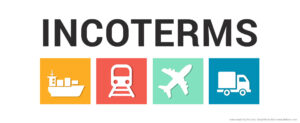
This is why the global trade community works through international bodies to establish standards for addressing various aspects of trade. Over the years, different organizations have taken on important subjects, with examples that include:
- International Chamber of Commerce — International Terms of Shipping. The International Chamber of Commerce, headquartered in Paris, France, develops and maintains a standardized list of shipping terms known as “Incoterms.” Because of Incoterms, buyers and sellers have a clear understanding of their responsibilities in the shipping process. Incoterms clarify responsibilities for important topics, including shipping, insurance, tariffs, and unloading. Today, more than 140 countries have adopted Incoterms, which, according to the U.S. International Trade Administration, have helped reduce misunderstandings among traders and minimize trade disputes and litigations.
- World Trade Organization — International Trade Rules and Trade Agreements. The Geneva, Switzerland-based World Trade Organization works to resolve trade disputes between countries and eliminate trade barriers through negotiated bilateral/ multilateral trade agreements. The WTO was established in 1995 as the successor to the General Agreement on Tariffs and Trade (GATT), which functioned as the international arbiter on trade issues for almost 50 years. The WTO remains the foremost international trade body and includes 164 members that represent 98 percent of world trade
- World Customs Organization — Harmonized Customs Standards and Processes. The World Customs Organization, based in Brussels, Belgium, maintains the Harmonized Commodity Description and Coding System, generally referred to as the “Harmonized System,” which is an international product nomenclature recognized worldwide. The Harmonized System provides a listing of six-digit codes that are assigned to about 5,000 different commodity groups. This listing is recognized by more than 200 countries and serves as the basis for each country’s tariff classification system. Because of the Harmonized System, for example, a shipment of tires entering the United States from Canada would have the same classification code assigned as similar shipments arriving from China or India. According to the WCO, more than 98 percent of the merchandise in international trade is classified in terms of the Harmonized System.
The WCO and WTO Turn to eCommerce Standards
In recent years, the WCO and WTO have turned their attention to the explosive growth in international eCommerce and the need for uniform terms and practices among the world’s customs organizations and trading partners.
WCO Framework of Standards on CrossBorder eCommerce
The World Customs Organization calls eCommerce “a game changer in the international trade arena” and cites the need for efficiency in the clearance and delivery of lowvalue and small shipments. And while the WCO’s efforts to develop international e-standards remain a work in progress, considerable progress has been made in identifying common goals and developing an understanding of what will become international standards.
Most recently, in June 2018, the WCO adopted a “Framework of Standards on Cross-Border eCommerce,” which the agency expects will eventually be implemented worldwide in accordance with each country’s timeline and unique circumstances.

Within the Framework, the WCO establishes 15 “principles and standards” for managing cross-border eCommerce shipments. Those tenets include:
- Legal framework for advanced electronic data. A legal and regulatory framework should be established for requiring advanced electronic exchange of data between eCommerce supply chain parties, customs agencies, and other relevant government agencies.
- Use of international standards for advanced electronic data. Relevant WCO and other international standards and guidance should be implemented in accordance with national policy, in an effective and harmonized manner, to facilitate the exchange of advanced electronic data.
- Risk management for facilitation and control of advanced electronic data. Customs administrations should develop and apply dynamic risk management techniques that are specific to the eCommerce context to identify shipments that present a risk.
- Use of non-intrusive inspection technologies and data analytics. Customs agencies should use data analytics and screening methodologies in conjunction with nonintrusive inspection equipment, across all modes of transportation, as a way to facilitate the flow of goods and strengthen customs controls.
- Simplified clearance procedures. Customs agencies, working in coordination with other relevant government agencies, should establish and maintain simplified clearance procedures that utilize preclearance processing, risk assessment of cross-border eCommerce shipments, and procedures for immediate release of low-risk shipments. Simplified clearance processes should include an account-based system for collecting duties and/or taxes and for handling return shipments.
- Expanding the concept of Authorized Economic Operator (AEO) to cross-border eCommerce. As a way to encourage micro-, small- and medium-sized enterprises to engage in cross-border eCommerce, customs administrations should consider applying AEO programs and mutual recognition agreements.
- Models of revenue collection. Customs administrations, working with appropriate agencies, should consider applying various revenue collection models (i.e., vendor, intermediary, buyer, or consumer, etc.) for duties and/or taxes. Customs agencies should offer electronic payment options, provide relevant information, allow flexible payment types, and ensure fairness and transparency.
- Consideration of de minimis thresholds. Each country establishes a de minimis threshold, which is the monetary value at which products crossing an international border are exempt from duties and many reporting responsibilities. Each country sets its own de minimis value. Although de minimis thresholds facilitate clearance of low-value shipments, an unintended consequence is that large numbers of shipments are now clearing international borders with minimal customs review, which potentially increases the risk of illicit substances inadvertently passing through customs. The WCO Framework calls on governments, when reviewing and/or adjusting de minimis thresholds, to “make fully informed decisions based on specific national circumstances.”
- Prevention of fraud and illicit trade. Customs administrations should work with relevant government agencies to establish procedures for analysis and investigations of illicit cross-border eCommerce activities to prevent and detect fraud and to deter the misuse of eCommerce channels.
- Interagency cooperation and information sharing. Governments should use electronic systems, including Single Window, where appropriate, as a way to provide cohesive and coordinated responses to cross-border eCommerce-related safety and security risks.
- Public-private partnerships. Customs administrations should establish and strengthen partnerships with eCommerce stakeholders to develop and enhance communication, coordination, and collaboration.
- International cooperation. Customs administrations should expand cooperation and partnerships to the cross-border eCommerce environment in order to ensure compliance and facilitation.
- Communication, public awareness, and outreach. Customs administrations should make consumers, the public, and other stakeholders aware of regulatory requirements, risks, and responsibilities associated with cross-border eCommerce through communication, education, and outreach programs and by “awareness raising.”
- Mechanism of measurement. Customs administrations should work in close cooperation with eCommerce stakeholders to accurately capture, measure, analyze, and publish cross-border eCommerce statistics in accordance with international standards.
- Explore technological developments and innovation. New technological developments should be assessed regularly to determine their potential contributions to more effective and efficient control of crossborder eCommerce.
With these proposed standards, the WCO is attempting to address what it has identified as common challenges for customs officials around the world. In announcing the standards, WCO Secretary General Kunio Mikuriya expressed hope that all WCO members and stakeholders would swiftly adopt the proposals as a way to “build the necessary momentum for further improving border management and enhancing trade facilitation.”
World Trade Organization — Reducing Barriers to eCommerce Trade
While the Brussels-based World Customs Organization (WCO) works to harmonize customs procedures for eCommerce shipments, the Geneva-based World Trade Organization (WTO) is working to reduce international trade barriers and restrictions.
The WTO first addressed the role of eCommerce in international trade in 1998 with adoption of a Declaration on Global Electronic Commerce. Among other things, that document affirmed agreement among WTO members to exempt electronic transmissions from customs duties. The document also outlined four key eCommerce-related areas of focus:
- Trade in services
- Trade in goods
- Intellectual property issues
- Economic, financial, and development needs of developing countries
Since its 1998 adoption, the Declaration has undergone periodic reviews called “dedicated discussions,” with annual reports submitted to the WTO director-general. However, Reuters reported in January 2019 that members of the trade community had grown “impatient” with the lack of formal eCommercespecific WTO rules and agreed to start negotiating a new regulatory framework.
Those ongoing negotiations are expected to result in a multilateral legal framework that will address key tenets, including:
- Improvement of consumers’ trust in the online environment and in combatting spam
- Initiatives to tackle barriers that prevent cross-border sales
- Permanent moratorium on imposing customs duties on electronic transmissions (Although debate has ensued with regard to what constitutes an “electronic transmission.” Historically, WTO has kept the scope narrowly focused on “services.” But, as technological capabilities evolve, the line between “services” and “products” has become murky, with many members looking to WTO for clarification.)
- Guarantee validity of e-contracts and e-signatures
- Address forced localization requirements and forced disclosure of source code
Much of the WTO’s eCommerce-specific work is being done in parallel to work underway by the Technical Barriers to Trade (TBT) committee. The TBT group works to identify concerns about actions taken by member-countries that may be causing disruption to the flow of international trade. In its 2018 annual report, the TBT committee noted that 22 new specific trade concerns had been raised, with 161 previously raised concerns still awaiting consideration.
The WTO’s Technical Barriers to Trade (TBT) committee identifies concerns about actions taken by member-countries that may be causing disruption.
As this report indicates, with more than 160 countries attempting to develop a mutually agreeable document, forging an international eCommerce trade agreement will be a significant undertaking. Nevertheless, the WTO has announced that the eCommerce negotiations that began in January 2019 will continue, with additional countries encouraged to participate.
U.S. Customs Seeks a Balance between Border Management and Trade Facilitation
Although the United States is an active participant in all international eCommerce related initiatives, the Customs and Border Protection agency has been active on the home front, prioritizing the need for strong U.S. border security without impeding the flow of eCommerce trade.
Finding a way to quickly and seamlessly process the surge in eCommerce shipments has been a top CBP priority. The agency has recognized the need for a “shift” in its traditional operational structure, which prioritizes high-value, containerized shipments and requires importers to submit required information in advance of a shipment’s physical arrival at the border. In 2016, the agency established a dedicated eCommerce and Small Business Branch, which is charged with refocusing CBP efforts to address the volume of low-value eCommerce shipments that often are not required to present detailed shipment information.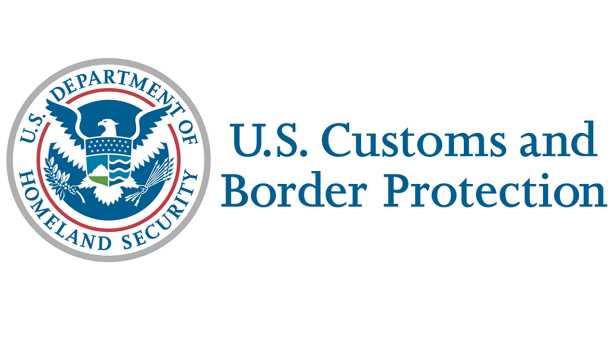
Strengthening compliance of such “informal entries” is a key objective of the “E-Commerce Strategy” that was announced by CBP in 2018. Although the eCommerce strategy is not a regulatory mandate and does not have the force of law, it provides a good overview for eCommerce stakeholders of how current customs procedures are likely to change.
The strategy outlines four specific goals for addressing eCommerce shipment compliance:
- Enhance legal and regulatory authorities to better posture CBP and interagency partners to address emerging threats.
- Review CBP’s existing statutory and regulatory authority to identify changes that will enable CBP to address threats posed by eCommerce shipments.
- Develop a plan that incentivizes compliance from all eCommerce supply chain stakeholders.
- Continue to build partnerships with small-package-focused domestic and international stakeholders, with the goal of strengthening the ability to share advanced electronic data.
- Enhance and adapt all affected CBP operations to respond to emerging supply chain dynamics created by the rapid growth of eCommerce.
- CBP originally designed its risk management practices to focus on traditional shipping methods. Now the focus must be expanded to address the unprecedented flow of goods from new, unknown, and often less proficient importers. To do this, CBP will rely on data analytics, data mining, and an array of powerful analytical tools.
- CBP will expand the scope of a pilot program already underway to capture advanced electronic data in the international mail environment to include additional foreign postal operators.
- Identify highest risk eCommerce packages through a counter-network approach that relies on state-of-theart techniques and technology. By implementing targeted solutions, strengthening interagency partnerships, and integrating data solutions, CBP will be better positioned to counter highly sophisticated and often well-financed criminal networks.
- Drive private-sector compliance through enforcement resources and incentives.
- Incentivize compliance through an eCommerce “known-shipper” program. CBP is considering enlisting the trade community in securing eCommerce shipment security by offering trade incentives to stakeholders that undergo rigorous screening and agree to certify the safety of their supply chains. This approach is similar to CBP’s existing known-shipper program, the CustomsTrade Partnership Against Terrorism (C-TPAT) program.
- Strengthen eCommerce compliance through enforcement mechanisms.
- Leverage Partner Government Agency network to enhance enforcement procedures for eCommerce shipments. (CBP conducts enforcement activities on behalf of several dozen Partner Government Agencies [PGAs], including the Consumer Product Safety Commission and the Food and Drug Administration. CBP intends to build upon these relationships by sharing information about eCommerce-related threats and compliance measures.)
- Facilitate international trade standards for eCommerce to support economic prosperity.
- Continue to be a leader in engaging with international partners with regard to developing global eCommerce compliance standards.
- Explore technology options to increase the exchange of eCommerce information.
- Educate the eCommerce community to promote an understanding of applicable cross-border trade rights and responsibilities.
As CBP begins to plan for implementation of its eCommerce strategy, the agency has been very clear that stakeholder buy-in will be critical. “Collaboration is key,” CBP Deputy Commissioner Robert Perez said at a March 2019 meeting of trade association and business representatives. “We’re going to ask you [the trade] to be shoulder to shoulder with us.”
De Minimis Threshold — Implications for Customs Processing
As U.S. regulators and business stakeholders work to address the “new normal” of large volumes of cross-border eCommerce shipments, the contributing role of the de minimis threshold, also referred to as “Section 321,” must be taken into account.
As a way to encourage cross-border trade and facilitate the customs review process, many countries establish a de minimis value, or threshold, that exempts products valued below that amount from duties/taxes and certain filing requirements. For many years, the threshold for goods entering the United States was set at $200. However, Section 321 of the Trade Facilitation and Trade Enforcement Act of 2015 increased that amount to $800.
The impact of the increased de minimis threshold has in many ways been a doubleedged sword. On the one hand, CBP has reported a surge in eCommerce shipments arriving at the border, which is a boost for U.S. retailers, including small and “micro” businesses that have found international markets for their products. Smaller businesses also benefit from reduced logistics costs since sub-$800 shipments do not require a formal entry process, which means reduced amounts of paperwork and documentation.
At the same time, the new threshold has allowed millions of additional shipments to qualify for duty and documentation exemptions. This in turn has heightened concern about increased security risks, with CBP Commissioner McAleenan noting a “perceived interdiction risk.” This concern has been echoed by several customs brokers associations, which, according to reporting by the Journal of Commerce, have identified three major areas of concern:
- The higher threshold has allowed a multitude of eCommerce exporters to ship to the United States without needing to provide key data elements to CBP.
- Savvy shippers understand the benefit of breaking up higher-value shipments into multiple shipments, with each valued at less than $800, as a way to evade duties.
- The U.S. de minimis value of $800 is inconsistent with de minimis levels in other countries.
“It’s a tsunami of small packages,” Amy Magnus, president of the National Customs Brokers and Forwarders Association of America said at a 2018 conference sponsored by the American Association of Exporters and Importers. “The challenge for customs officers is to do adequate inspections of truckloads filled with tiny packages,” she added.
The Journal of Commerce cited other customs brokers’ concerns, including the risk of fraudulent classifications leading to quota violations, illegal importation of opioids and other prescription drugs, and various other attempts to circumvent U.S. import laws. These concerns stem from current practices that allow a transportation manifest (rather than more detailed documentation that accompanies higher-value shipments) to serve as the document upon which admissibility is judged.
With regard to the imbalance that exists among trading partners, customs brokers expressed concern that other countries do not offer reciprocal trade facilitation initiatives. “We made it easier for countries like China to bring their goods to the U.S. with no duty and limited data,” Magnus explained. “But try to send that same package to China and see what happens. If we try to export our goods via eCommerce, we’re not afforded that same level of minimum data.”
Looking Ahead — Increased Scrutiny of Section 321 Shipments
To address the unintended consequences of Section 321 provisions, CBP has announced plans to amend de minimis shipment processing. Initiatives currently underway include:
Advanced electronic manifest requirement.
As of January 2019, all truck shipments containing “Section 321 merchandise” are required to file an advanced electronic manifest. Previously, Section 321 shipments were exempt from e-manifest requirements and could be cleared through customs via a paper/manual manifest upon arrival at the border.
Data elements that now must accompany low-value shipments include:
- Shipment type
- Shipment control number
- Shipper and consignee name and address
- Commodity information
- Detailed product description
- Quantity and weight
- Hazardous materials code (if applicable)
- Emergency contact information
Accelerated Completion of Automated Commercial Environment (ACE)
The Automated Commercial Environment (ACE) is the system through which members of the trade community submit required import and export documentation to Customs and Border Protection. To facilitate collection and processing of Section 321 shipment information, a new ACE entry type — Entry Type 86 — Informal De Minimis — will be created. Entries will be made through the Automated Broker Interface, which will integrate directly with ACE. This new entry field is expected to be deployed in August 2019 and is intended to improve CBP’s ability to conduct risk-based assessments of lowvalue shipments.
21st Century Customs Framework
As a way to keep pace with changes in global business and supply chain practices, CBP launched an initiative called the “21st Century Customs Framework” to ensure CBP’s ability to fulfill its responsibilities in the rapidly changing environment. The initiative was announced in the December 21, 2018, issue of the Federal Register, at which time members of the trade community were invited to submit input.
CBP used feedback generated during that comment period as the basis for a stakeholder meeting that took place in March 2019. At that meeting, CBP announced the Framework would focus on six key themes designed to modernize various aspects of CBP’s capabilities. These six themes include:
- Emerging roles in the global supply chain. As technological advances and new modes of conducting business evolve, CBP needs to ensure all parties in the modern supply chain are accounted for and held responsible.
- Intelligent information. CBP’s efforts on intelligent information are anchored on further improving risk management and the impact of efforts to detect high-risk activity, deter noncompliance, and disrupt fraudulent behavior. CBP’s interest is in better utilizing technology, big data, and predictive analytics to protect Americans and the U.S. economy.
- Cutting-edge technology. CBP needs to better understand new technology and best options for improving trade facilitation and trade enforcement.
- Data access and sharing. The volume and types of data and the speed at which the data can be transmitted create a valuable opportunity for CBP and trade stakeholders. CBP has prioritized the facilitation of data sharing and identifying best available technology platforms.
- 21st century trade processes. CBP plans to refine certain import processes to better reflect the modern trade environment and improve the experience of importers, brokers, and other members of the trade community. CBP will work to identify overly burdensome or outdated processes that may be updated or replaced.
- Self-funded customs infrastructure. New requirements affecting CBP, Partner Government Agencies, and the trade industry will necessitate updates to ACE.
CBP solicited feedback from members of the trade community on these six themes. At this point, CBP is using that feedback to help identify policy, regulatory, and statutory improvements needed as part of a comprehensive modernization effort.
Canada Addressing Customs Implications of eCommerce Surge
Canada has also been affected by the surge in cross-border eCommerce shipping and is working to address the effects on its regulatory processes.
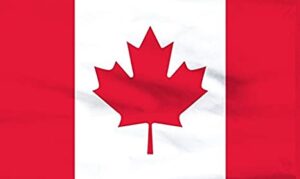
The surge in cross-border eCommerce is forcing CBSA administrators and members of the trade community to evaluate existing customs clearance procedures and consider options for improvement.
Courier Low-Value Shipment Program
Canada was somewhat prescient in planning for the surge in eCommerce when, in 1993, the Courier Low-Value Shipment Program (CLVS) was implemented. The stated purpose of the program is to streamline and expedite the importation process for shipments valued at less than C$2,500 that are transported by a qualified courier.
However, as this program has gained in popularity among international eCommerce shippers, some members of the trade community have expressed interest in tightening eligibility requirements. Carol West, president of the Canadian Society of Customs Brokers, suggested in a Canadian Retailer opinion article that the program might need to be reconsidered “in a broader context and modernized so that they can realize the full benefit of data analysis.”
Prioritizing Data
CBSA Administrator John Ossowski, in 2017 testimony before the Canadian Parliament’s Public Accounts committee, noted that with more than 300,000 postal and courier shipments arriving at the border each day, “we don’t often get, in the postal mode, the advance information and clear description of what the good is to allow us to make the proper assessment.” The agency head noted that this lack of visibility “is particularly worrisome when it comes to the importation of synthetic opioids, such as fentanyl, which is something that’s of huge concern to us.”
Administrator Ossowski expressed his support for “better data up front on everything that comes into Canada.” Toward that goal, CBSA has initiated a pilot program to test the efficiency of blockchain technology in the customs process. The pilot, which relies on the TradeLens blockchain-enabled solution developed by IBM Corp. and A.P. Møller-Maersk, will determine the solution’s effectiveness in providing a “singular, trusted digital supply chain for all shipments entering Canada,” according to Ossowski.
As CBSA explores opportunities to improve domestic eCommerce shipment screening, Canada is also very much involved in efforts to build international standards.
De Minimis — USMCA
As noted previously, a significant disparity exists between the de minimis thresholds currently in place among NAFTA partners Canada, Mexico, and the United States. While the U.S. exempts qualified shipments valued at less than $800 from duties and most documentation requirements, Canada and Mexico maintain much lower thresholds of C$20 and M$50, respectively.
Under the draft United States-Mexico-Canada Agreement (USMCA), which, if approved, would replace NAFTA, Canada has agreed to two de minimis-related actions specific to online purchases:
- The duty-free level will increase from C$20 to C$150.
- The level at which shipments are liable for sales tax will increase from C$20 to C$40.
Canada Seeks Stakeholder Input to Guide WTO Discussions
Canadian representatives were among the group of WTO members who met in January 2019 to begin deliberations on international eCommerce standards. Now that the WTO is engaged on the eCommerce topic, and with deliberations likely to continue for an extended period, Canadian officials intend to remain actively engaged. To ensure that interests of the Canadian trade community are accurately represented, the government solicited feedback from interested parties.
A January 2019 posting from Global Affairs Canada stated: “As part of its interest in achieving binding commitments at the WTO that reflect the reality of modern trade, the Government of Canada is seeking input from stakeholders to inform potential future WTO negotiations on eCommerce. Although the scope of these potential future negotiations has yet to be determined, stakeholder input at this early stage will prove useful in identifying Canadian positions, interests, and sensitivities.”
Stakeholder input was accepted by Global Affairs Canada through April 2019, and is now being used to determine Canada’s priorities as WTO discussions continue.
Canada: A Leading Role in WCO “eCommerce Framework”
Canada’s eCommerce stakeholders have apparently had a leading role in developing the World Customs Organization’s “Framework of Standards on Cross-Border eCommerce,” with a CBSA official serving as co-chair of the WCO subcommittee tasked with developing the document.
In October 2018, CBSA administrator Mike Leahy was elected co-chair of the Working Group on eCommerce, and will oversee the group’s work to expand on the principles and standards outlined in the framework.
Conclusion
Two common themes have emerged with regard to implications for international eCommerce:
- eCommerce presents a tremendous opportunity for businesses worldwide to expand sales to markets that were previously off-limits.
- With that growth comes tremendous risk, and a heightened potential for mischief, as customs organizations struggle to keep pace with the number of packages arriving at their borders.
Finding the right mix to allow eCommerce trade to thrive, while also ensuring border security is the shared goal of the world’s customs agencies. And it seems the world’s foremost international trade bodies, the World Trade Organization and the World Customs Organization, are rising to the challenge in seeking uniform standards and processes.
With dozens of countries involved, agreeing on international standards will take time. But based on the international community’s good track record in resolving previous needs — Incoterms and the Harmonized System — there’s reason for optimism that new standards will emerge that will allow for the safe, and prosperous growth of international eCommerce.
Purolator. We deliver Canada.
Purolator is the best-kept secret among leading U.S. companies who need reliable, efficient, and cost-effective shipping to Canada. We deliver unsurpassed Canadian expertise because of our Canadian roots, U.S. reach, and exclusive focus on cross-border shipping.
Every day, Purolator delivers more than 1,000,000 packages. With the largest dedicated air fleet and ground network, including hybrid vehicles, and more guaranteed delivery points in Canada than anyone else, we are part of the fifth-largest postal organization in the world.
But size alone doesn’t make Purolator different. We also understand that the needs of no two customers are the same. We can design the right mix of proprietary services that will make your shipments to Canada hassle-free at every point in the supply chain.
